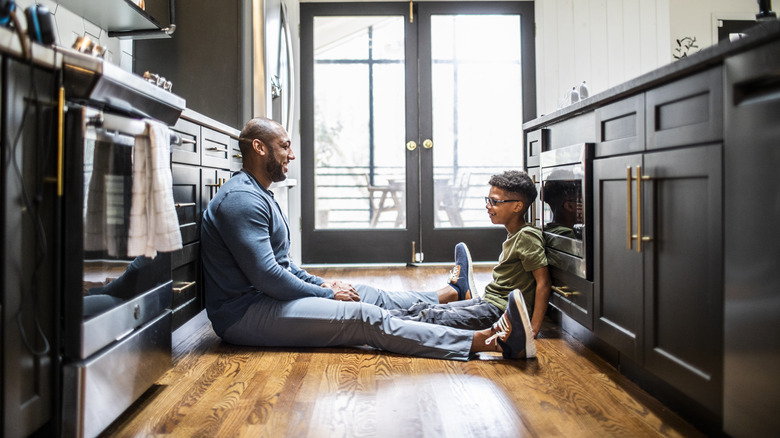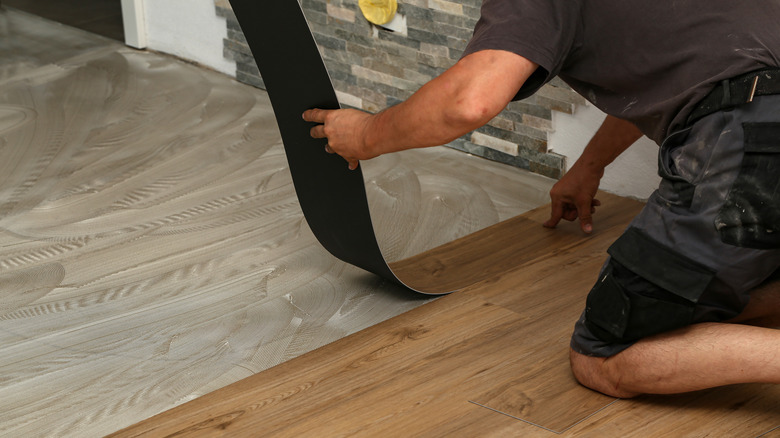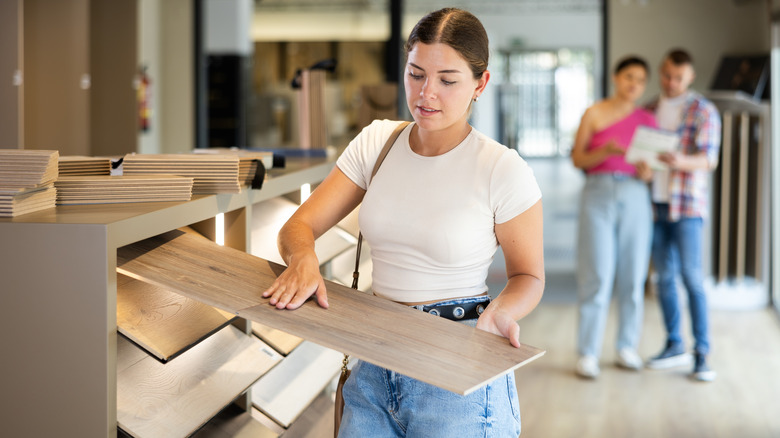Lesser-Known Alternatives To Traditional Kitchen Floors You Shouldn't Overlook
Hardwood and tile floors are kitchen classics for a reason. They tend to be durable and are among the flooring options that increase your home's resale value. Even so, in an exclusive interview with House Digest, Natalie Cady, Hard Surfaces Product Director at Shaw Floors, explained, "Homeowners are increasingly opting for durable, low-maintenance flooring in kitchens beyond traditional hardwood and tile." Whether it's a lower price point you are after or durability and waterproof options, Cady shared that lesser-known materials like LVT and laminate are becoming increasingly popular flooring options for kitchens.
While tile in the kitchen may be a tried-and-true option for homeowners, it has some downsides. Traditional stone or ceramic tile can be cold and hard. There are also things to consider before installing hardwood. Wood gives any room warmth, but can be susceptible to water damage, which makes it a bit problematic in a kitchen. Both can take longer to install than LVT or laminate, which often be walked on immediately. With all of these downsides in mind, homeowners are rethinking the obvious choices for flooring and looking at alternatives. Budget-friendly options like luxury vinyl tile (LVT) and laminate mimic the look of hardwood or tile while offering additional advantages.
Why LVT and laminate are trending
It's hard to go wrong when choosing a classic option like wood or tile for your kitchen project, but when you can get the hardwood or tile look without some of the drawbacks, it's worth considering alternatives like vinyl. "Luxury vinyl tile (LVT) has become a top choice, offering waterproof protection, ultra-durable wear layers, and easy installation while beautifully mimicking natural wood and stone," said Natalie Cady as she spoke exclusively to House Digest. LVT and laminate can often be installed more quickly than wood or tile, and, in some cases, over existing floors. This can make them a good choice for DIYers or anyone looking to minimize disruption.
Of course, there are inexpensive types of hardwood floor, but in high-traffic areas where water is likely to be spilled or leaked, wood flooring may not be the best choice. This is why tile has been such a popular option. Now, laminate is giving them both a run for their money. "Laminate is another excellent alternative, featuring sealed edges and advanced core technology to resist water damage while providing a budget-friendly hardwood look," said Cady. With these stellar options to choose from, how do you decide which type of floor will work best for your kitchen? Well, there's a lot to consider.
How to choose the flooring that's right for you
LVT and laminate floors both have some advantages over tile and hardwood. However, there are some things to keep in mind when deciding which material to install, especially if your budget allows for a variety of options. Determining the option that makes most sense in your home will depend on a number of factors. "Before selecting the best flooring for your kitchen, consider key factors like budget, installation method, timeline, your personal style and design goals, and lifestyle needs," Natalie Cady exclusively told House Digest.
"If you're on a tight budget and planning a DIY project, LVT is a great choice for its ease of installation. If you have pets or heavy foot traffic, laminate offers added scratch resistance," Cady said. In wet areas, LVT typically takes the cake as it is waterproof. Although it is designed to withstand some moisture, some laminate can be damaged by a particularly heavy mopping. If something does happen to your LVT, it can also be easier to patch than laminate. If your floors are not completely level, however, laminate may be easier to install without fully leveling. Exploring the pros and cons of installing laminate flooring or LVT flooring can help you decide what's right for you.


